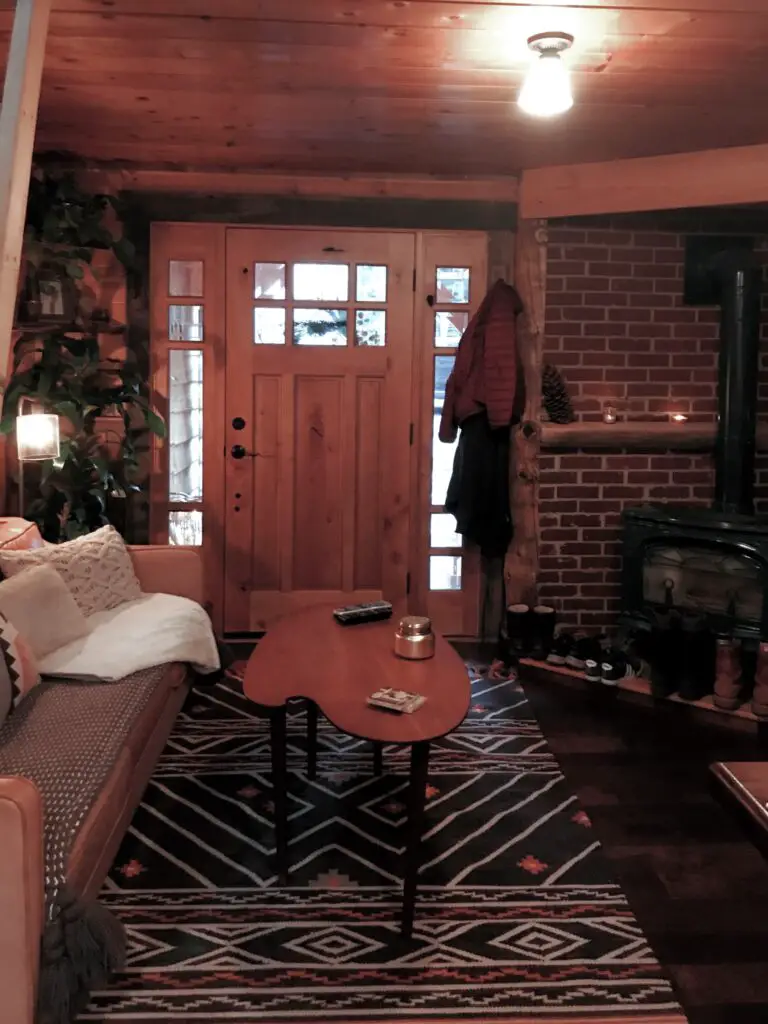Effortless farmhouse style is recognizable for its cozy textures and down-home charm. When designing in this aesthetic, it’s a good idea to keep a few basic design principles in mind. I’ll go through a few of my tips for decorating with some cozy farmhouse style.
Contents
Layer Up
Farmhouse style is the result of layering warm, simple elements together. The more layers you have, the better, as long as you keep your color scheme consistent. Taking note of the focal points is essential. Consider how the rooms flow, what you see from each angle, and keep the color scheme as consistent as possible.
Natural textures and a soft color palette are ways to achieve this look. Experiment with different wood textures. Incorporate other textures in your decor, such as rattan, plaster finishes, and linen textiles.
Don’t Go Crazy With Open Shelving
In terms of storage, more isn’t always better. Open shelves are trendy for farmhouse spaces, but they’re also tricky to style. If you want to mix it up, don’t use all open shelves. It’s easy to get hung up on what to put on open shelves because you don’t want them to look cluttered. Include a smaller area of open shelving in addition to enclosed cabinets. Display some pretty vases and wooden cutting boards.
Repetition and Surprise
Composing your farmhouse style will be easier if you use the same colors, textures, and design motifs—It’s all about repetition. The more you repeat an element, the more intentional it appears to be.
When creating a cohesive farmhouse design, using the same colors and natural elements is important. But that doesn’t mean you can’t also add contrasting accents to personalize your look.
Farmhouse details in black are popular. If you don’t want them to overwhelm your space, you can use smaller black elements in your area such as rugs, picture frames, and fabric patterns to contrast the softer color palette.
You can elevate the farmhouse look by combining more modern light fixtures or glamorous brassy hardware with rustic finishes—I like to play around and get a look that is slightly different from what is trending.

Wall Panels
Shiplap is the most traditional type of farmhouse wall paneling. Shiplap consists of (usually horizontal) boards covering the wall with small gaps. It adds texture and charm to a house. But did you also know that other types of wall paneling work just as well (and are sometimes more affordable)? They include beadboard, clapboard (for exterior siding), reclaimed wood, board and batten, and tongue and groove.
You can do wainscoting with all of these options, which means you cover only the lower part of the wall with wall paneling. The look of beadboard wainscoting is more vintage farmhouse, while board and batten is more modern farmhouse.
Wood Finishes
The wood is the meat and potatoes of the farmhouse. Back in the day, farmhouses were simple homes built by farmers and their wives. This is an old practice, going as far back as the westward expansion of the early 1800s (think Little House on the Prairie). The home at that time either kept its natural wood finish or got a coat of whitewash (white paint) if the family could afford it.
To design a farmhouse that reflects today’s trends, keep wood at the forefront. Examples include flooring, farm tables, kitchen chairs (especially Windsor chairs), other wood-finished furniture, exposed ceiling beams, kitchen cabinets, butcher block countertops, wood bookshelves, etc. How do you define farmhouse style? Wood, wood, wood. And it can be painted too – white wood looks stunning.
Freestanding Bathtub
Freestanding tubs are a great focal point and feature in the bathroom. Choosing the right tub shape will further define your farmhouse style. Clawfoot bathtubs are classic, and you can sometimes find them at antique stores or even barn or farmhouse auctions. Be careful with these – some of these types of tubs, unfortunately, contain lead paint. You’ll want to check into this if you plan to use the tub for bathing. Old freestanding tubs also look great in the garden as planting beds!

Imperfect Details
One of the hallmarks of farmhouse style is imperfection. This can include furniture with scratches, wood flooring you let wear over time, and even rust on some of your vintage collectibles. Here are some ideas for curating purposeful imperfections: chippy furniture (bonus if it’s vintage!), old signs, brushed metal, galvanized planters, and old books.
So what are some of your favorite ways to create a cozy farmhouse? Share your tips and ideas in the comments section below!


